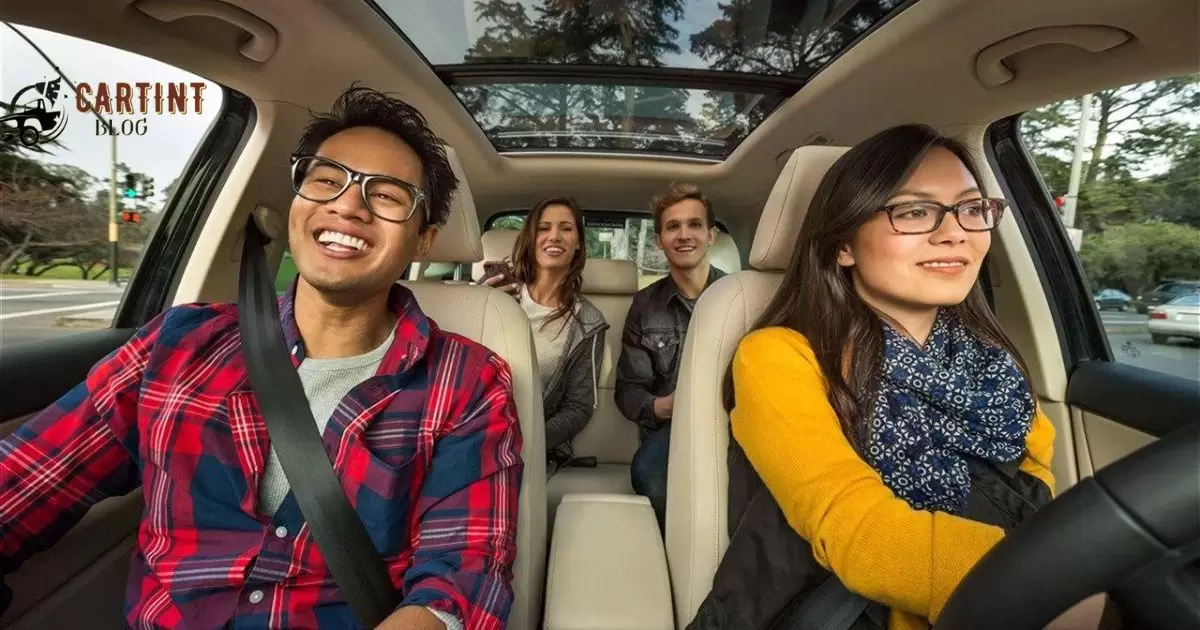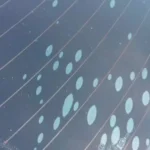The trend of tinted car windows continues to grow in popularity. However, most drivers opt for standard tints over privacy tints, which completely block views into a vehicle. Why don’t more motorists spring for this ultra-dark window covering? The reasons are complex, but boil down to legality, safety, and cost.
Privacy tints refer to a specialized type of automotive window film or treatment that renders a car’s interior nearly invisible. Unlike regular tints, privacy films are extremely dark – think limousine blackout shades. This opacity blocks not just UV rays, but visibility as well. From the outside, passengers and contents inside the car are virtually undetectable.
While this level of coverage offers unparalleled discretion, several key factors limit broader use of privacy tints. Laws restricting window darkness, concerns over driving safety, and the higher cost of these tinting products dissuade widespread adoption. Still, for those desiring maximum concealment, privacy films fill a niche.
Legality of Privacy Tints
One major barrier to more drivers adding privacy tints is that many states prohibit excessively dark tinting. Most regulations allow a minimum level of light transmittance to ensure some outward visibility from vehicles. As privacy films block virtually all external light, they often violate legal limits.
State Laws on Window Tinting
Laws concerning permissible window tint levels vary significantly by state. Some take a relatively permissive stance, while others impose rigid constraints.
Most regulations apply only to the front driver and passenger windows, given the importance of forward sightlines. Is it normal to have bubbles after window tinting? Still, privacy tints typically exceed even rear window darkness allowances.
Front Window Restrictions
The vast majority of states cap allowable tint on front driver and passenger windows between 35-50% visible light transmission (VLT). This aims to provide adequate outward visibility and prevent overly concealing films. As privacy tints block nearly 100% of external light, they clearly violate these front window limits.
Back Window and Sunroof Regulations
Rear window and sunroof rules also constrain use of privacy films in many areas. While less strict than front window laws, back window VLT minimums of 15-35% still exceed the full opacity of privacy tints. And states with blanket restrictions on overall vehicle window darkness preclude ultra-dark privacy shades as well.
Enforcement Actions
Given the outright illegality of privacy tints in most jurisdictions, drivers face sanctions for their use. Police frequently issue “fix-it” tickets for excessively dark window tinting, mandating removal of the film. Repeat violations can prompt fines of $50-$500+, and even misdemeanor charges in some locales.
Will Cops Pull You Over For 35% Tint
Getting pulled over by cops for 35% tint depends on local laws. If 35% tint exceeds your state’s legal limit, especially on front windows, police can stop you. But many states allow 35%. So if your tint measures 35% or lighter, being pulled over is unlikely. Still, cops have discretion to stop very dark tint they think blocks visibility.
Understanding your tinting laws is key to avoid getting pulled over:
| State Allows 35% Tint | Risk of Getting Pulled Over |
| Yes | Low if film tests at 35% or lighter |
| No | High, will likely get fix-it ticket |
The table shows if 35% tint is legal in your state, your risk of getting pulled over is low if the actual tint tests at 35% or lighter. But if your state doesn’t allow 35%, you likely will get a ticket to remove the excess tint. Knowing your laws is critical.
Driving Safety Concerns
Beyond legal prohibitions, the extreme darkness caused by privacy tints also raises legitimate safety issues. By blocking the full spectrum of external light, these films have the potential to impair driving abilities, especially at night.
Visibility Limitations
Perhaps the most obvious risk with privacy tints lies in the severely constrained visibility they cause. With 100% of outside light blocked, seeing road conditions, signs, pedestrians, and other vehicles becomes exponentially more difficult. This forces drivers to rely exclusively on mirrors and cameras with limited perspectives.
Nighttime and Inclement Weather Challenges
Especially troublesome are the visibility challenges privacy tints introduce in nighttime or inclement weather driving. With zero external light sources able to penetrate the darkness, navigation depends completely on headlights and instrumentation. Rain, fog, and snow compound these vision difficulties even further for privacy tint users.
Blind Spots and Accident Risks
Moreover, the expansive blind spots caused by privacy films heighten accident risks. With ultra-dark side and rear windows concealing entire areas, the potential for lane changes, merges, and turns into unseen vehicles rises substantially. This may negate any security benefits of privacy tints following an incident.
Emergency Response Hindrances
Of equal concern are the potential barriers privacy tints create for emergency personnel responding to an accident or vehicle fire. The complete opacity caused by privacy shades can prevent first responders from seeing inside to assess and assist injured occupants. For this reason, many safety advocates argue strongly against their automotive use.
Getting pulled over for illegal tint often relates to local laws. If your state bans the darkness you have, cops may stop you. Even if legal, very dark tint can still prompt cops to halt you. They think it blocks seeing needed for safe driving.
You can prevent tint pulls overs. Know your area’s rules on darkness allowed. Get professional shop to test your actual visiblity. Make sure you meet minimums. If too dark, remove old tint. Replace with film that complies with laws. Following regulations properly helps avoid police stops.
Privacy Tint Costs
The third key factor curtailing mass adoption of privacy tints comes down to their premium costs. Both factory-installed privacy glass and aftermarket tinting films carry a considerable price premium versus standard shades.
Factory Privacy Glass Expense
Automakers market factory-tinted privacy glass as a luxury feature, carrying a typical option cost of $500-$1,500. This requires purchasing an upper-trim model just to access this add-on, with the base price starting around $40,000. So the total new car investment for privacy glass can easily approach $60,000 or more.
New Car Price Bumps
Most models only offer privacy glass on top-of-the-line editions, necessitating expensive upgrades for buyers prioritizing discretion. This includes stepping up to luxury brands like Lexus, BMW, Mercedes, and Cadillac solely to get this otherwise rare factory tinting treatment.
Limited Availability and Compatibility
Additionally, privacy glass enjoys only limited availability even on high-end vehicles. Automakers tend to restrict it to rear passenger windows, with opacity and heat rejection properties varying widely between makes and models. So achieving an ideal level of coverage across all windows proves difficult.
Aftermarket Privacy Tint Pricing
Opting for specialty aftermarket privacy tints also entails elevated pricing. Unlike regular dyed, metallic, ceramic, or hybrid films costing $100-$500, privacy shades run $500+ just for rear windows due to their exotic construction. Expanding coverage to all windows can multiply this expense even further. Factor in needed upgrades to thicker glass or acrylic sheeting, and overall costs continue piling up.
Does A Window Tint Ticket Go On Your Record
Yes, a window tint citation does go on your driving record. The ticket creates a permanent mark police can view in their system. Even if you pay the fine or remove the illegal tint, it stays on your history.
You can prevent more tickets. Check your state’s rules on allowable darkness. Get a shop to test your actual visibility percentage. If too dark, replace film to meet regulations. Following the law properly helps avoid future police stops for tint. Driving legally minimizes risk of multiple violations on record.
WhenPrivacy Tints Make Sense
Given the legal, safety, and cost challenges inherent with privacy tints, mainstream use remains limited. Still, for those prioritizing absolute discretion above all else, privacy films fill an important niche.
Security and Anti-Theft Benefits
For drivers frequently parking in unsafe areas or transporting valuables, the unparalleled security benefits of privacy tints hold tremendous appeal. Their unmatched opacity completely thwarts would-be thieves from peering inside to spot items to steal. This can provide peace of mind for those routinely leaving precious cargo or sensitive materials in their vehicle.
Protection of VIPs and Public Figures
Likewise, the anonymity afforded by privacy tints proves invaluable for VIPs, celebrities, and other public figures preferring to maintain low profiles. The inscrutability of privacy films allows traveling while avoiding drawing unwanted attention, gawking, and paparazzi intrusions.
Privacy While Living in Vehicle
Vehicle dwellers and vanlifers also stand to benefit tremendously from the discretion capability of privacy tints. The seclusion they permit allows changing clothes, working, or sleeping inside without worrying about prying eyes from passerby. For those residing in their vehicle full-time, this privacy element fosters an enhanced sense of home and security.
How To Not Get Pulled Over For Tint
To avoid getting pulled over for tinted windows, ensure your car window tint complies with local regulations. Check the specific tint percentage allowed in your area, and make sure your car’s windows adhere to these guidelines. Regularly inspect your tint to ensure it remains within the legal limits.
Keep all necessary documentation in your vehicle, such as the tint installation certificate, to show law enforcement if needed. Stay informed about any changes in tint regulations to stay compliant and minimize the chances of getting pulled over for tinted windows. Following these steps can help you enjoy the benefits of window tint without the hassle of traffic stops.
Frequently Asked Question
Are privacy tints illegal in some states?
Yes, privacy tints often violate laws restricting excessively dark window films.
Can privacy tints make night driving more dangerous?
Yes, by blocking external light, privacy tints severely reduce visibility at night.
Do privacy tints cost more than regular tint?
Yes, both factory and aftermarket privacy films carry steep price premiums.
Do privacy tints provide better security for valuables?
Yes, their opacity helps conceal items inside to deter potential thieves.
Are there any benefits to privacy tints for some drivers?
Yes, certain drivers like celebrities and vehicle dwellers value the anonymity and discretion privacy tints allow.
Conclusion
Privacy tints for cars remain a niche product due to legal restrictions, safety considerations, and high costs. The extreme opacity of these films often violates state laws capping allowable window darkness. Vision limitations also raise legitimate driving hazards, especially at night and in bad weather. Additionally, both factory and aftermarket privacy tints carry steep price premiums, requiring expensive upgrades.
Still, for those highly prioritizing discretion and security in their vehicle, privacy shades provide unparalleled benefits. From protecting valuables to allowing vehicle dwellers greater comfort, these ultra-dark tints serve specific needs for certain drivers. Determining priorities and assessing trade-offs allows concluding whether privacy films warrant investment despite their limitations. For most motorists, however, standard tinting likely remains the more practical option.



